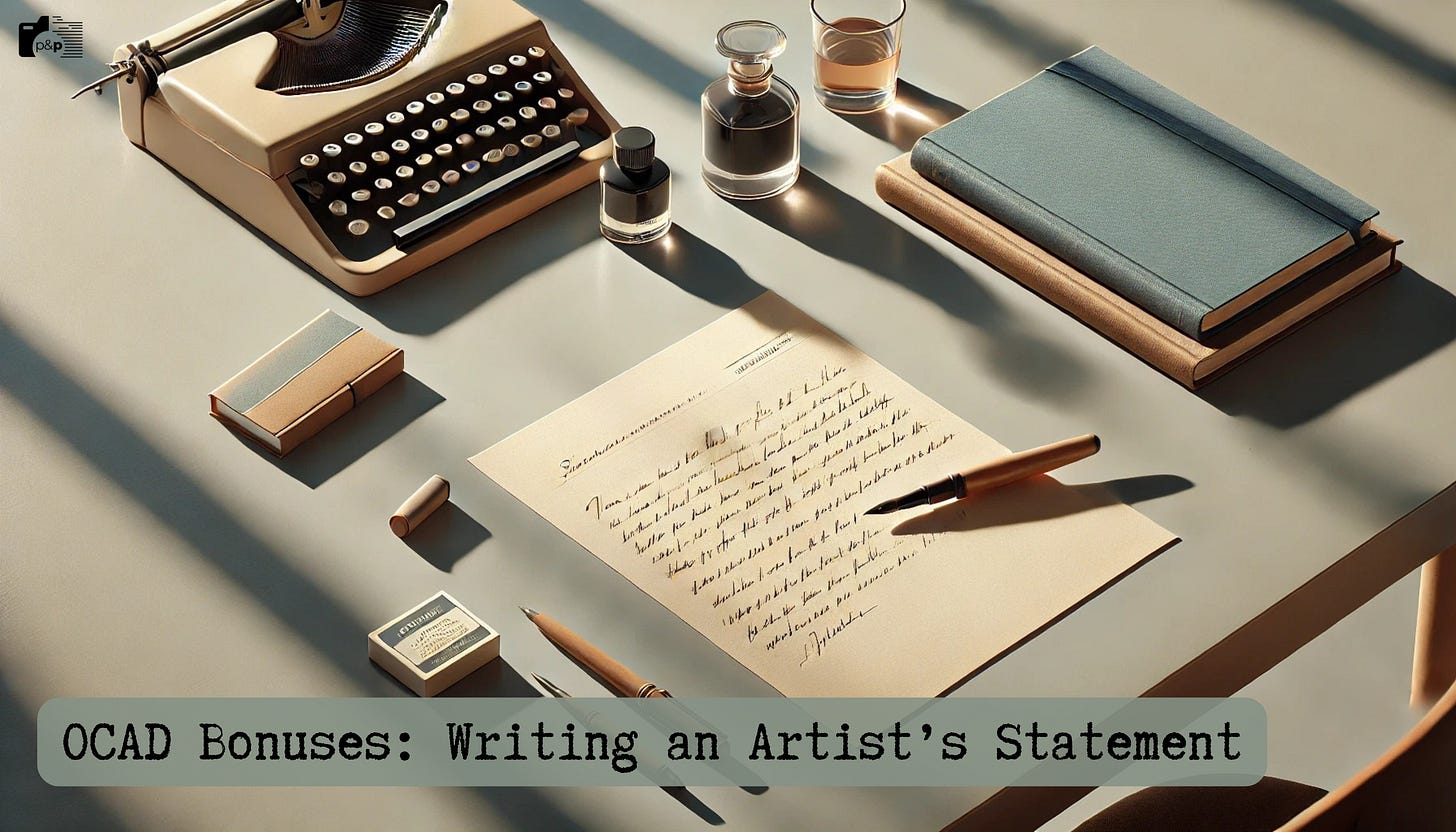Artist Talk – Art as People, Stories, and Ideas
The first day began with all of us gathered in a room, anticipation in the air. One of the instructors, Lina Wu, welcomed us and started sharing her insights as an artist. There were a lot of ideas floating around, but a few points hit differently—ones that stuck with me:
Think of interactive ways to tell stories. Art isn’t just about what’s on the canvas or screen—it’s about people, connections, and engagement. How does the viewer complete the story?
What drives you? She asked us to reflect on how we became truly interested in art or design. What motivates us to create?
The shift from high school to university. In high school, the focus is often on technical execution. In university, the emphasis shifts to the argument or idea behind the work. What are you saying through your art?
Take feedback with gratitude. Not every critique will feel good, but every critique is a chance to grow.
It was an inspiring way to start. A reminder that art isn’t just making—it’s thinking, storytelling, and evolving.
I’m Sarah—someone standing at the edge of university life, with a camera, some scraps of inspiration, and a head full of stories. If you're into design, writing, or figuring things out as you go, I’d love your company (and your feedback!) on this unfolding journey.
Writing an Artist’s Statement: Defining the Why
Putting Words to the Work
On the 5th day, we got a bonus seminar. It began in a quiet room, all of us gathered with notebooks open, ready to tackle something that, for many artists, is more daunting than the art itself—writing about it.
Our instructor, Mehnaz Lamia from the Creative Writing department, was here to guide us through the process of crafting an artist’s statement—a concise, compelling introduction to who we are, what we make, and why it matters.
Creating a strong artist statement is more than just a formality. It’s a bridge between you and your audience, a way to articulate your intentions, materials, and personal perspective in a way that invites engagement. The challenge? Doing it concisely, with clarity and purpose.
Breaking Down the Artist’s Statement
There were a lot of takeaways from this session, but a few points stood out the most:
Your artist statement should include the intention behind your work. What drives you? What are you exploring?
Think of it as the first step in audience engagement. Your words should invite people into your creative world.
Your relationship to your work matters. How does your personal perspective shape your artistic choices?
Describing your materials and process is a great place to start. The way you choose to create often reveals a lot about your artistic voice.
Document everything. The process—mistakes, revisions, experiments—is just as valuable as the final outcome.
Visit galleries and read other artists’ statements. The best way to learn is to see how others communicate their work.
Write your bio in third person, your artist statement in first person. One is an introduction, the other is a direct conversation with your audience.
Developing the Right Skills
Writing an artist statement isn’t just about words—it’s about understanding your practice. Mehnaz emphasized a few core skills that shape a strong statement:
Doodling and idea-mapping—sometimes, sketching your thoughts out visually makes it easier to translate them into words.
Experimenting and embracing mistakes—unexpected outcomes often lead to deeper insights.
Treating experiences as research—every exhibition you visit, every material you try, every project you start (and abandon) adds context to your work.
Recognizing that research isn’t just academic. Watching, reading, searching online—it’s all part of the learning process.
Curiosity. Maybe not a skill, but definitely a necessity.
Questions to Ask Yourself
To help us craft our own artist bios, Mehnaz gave us a set of guiding questions:
Where are you studying (or where have you studied)?
What disciplines do you work in? (Art, dance, music, robotics, science, sports—anything that informs your creative practice.)
Have you done community-based, volunteer, or professional work related to your artistic interests?
Have you exhibited your work? Where?
What influences your work? (Everything from personal experiences, places you've lived, food, politics, access to materials, technology—nothing is too small.)
Final Thoughts
This seminar was less about writing a single statement and more about learning how to articulate our creative identity. The process of defining what we do, why we do it, and how we want it to be perceived isn’t just for artist bios—it’s an ongoing practice that evolves with our work.
And as the final day of the program wrapped up, I realized this wasn’t just about learning to write—it was about learning to see my own creative journey with more clarity. What I make is one thing, but understanding why I make it? That’s where the real work begins.
Thank you for reading all the way through—it means more than you know. If you felt something, learned something, or even just want to help me get better at this whole writing-and-designing-my-way-through-life thing, I’d love for you to subscribe, share a thought, or leave a gentle critique. Every bit of feedback helps me grow.


![Sarah [Pixels & Paragraphs]'s avatar](https://substackcdn.com/image/fetch/$s_!Kr_J!,w_36,h_36,c_fill,f_auto,q_auto:good,fl_progressive:steep/https%3A%2F%2Fsubstack-post-media.s3.amazonaws.com%2Fpublic%2Fimages%2Fa818115e-a0ee-4e93-9415-302b137a72dd_500x500.png)
